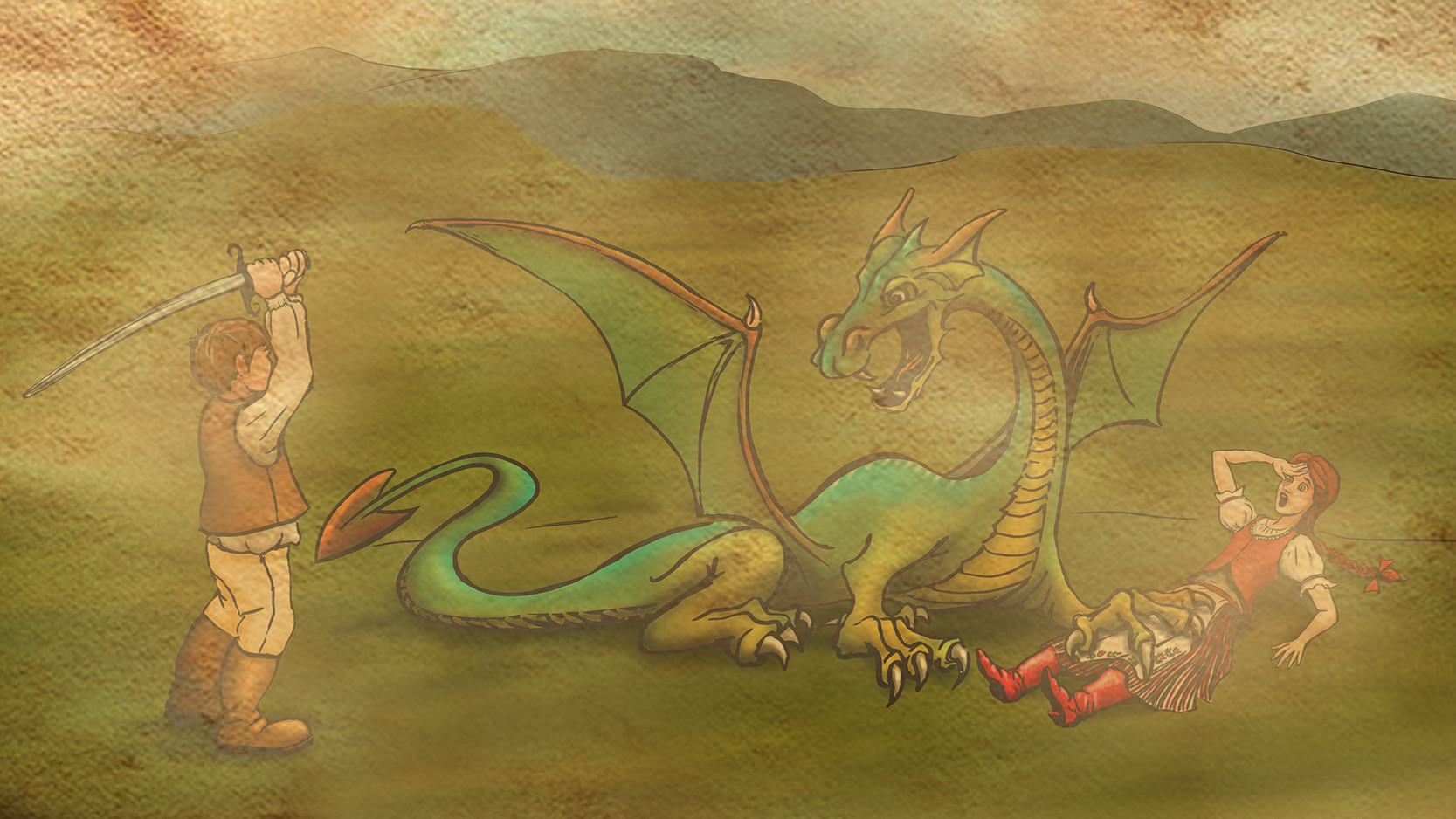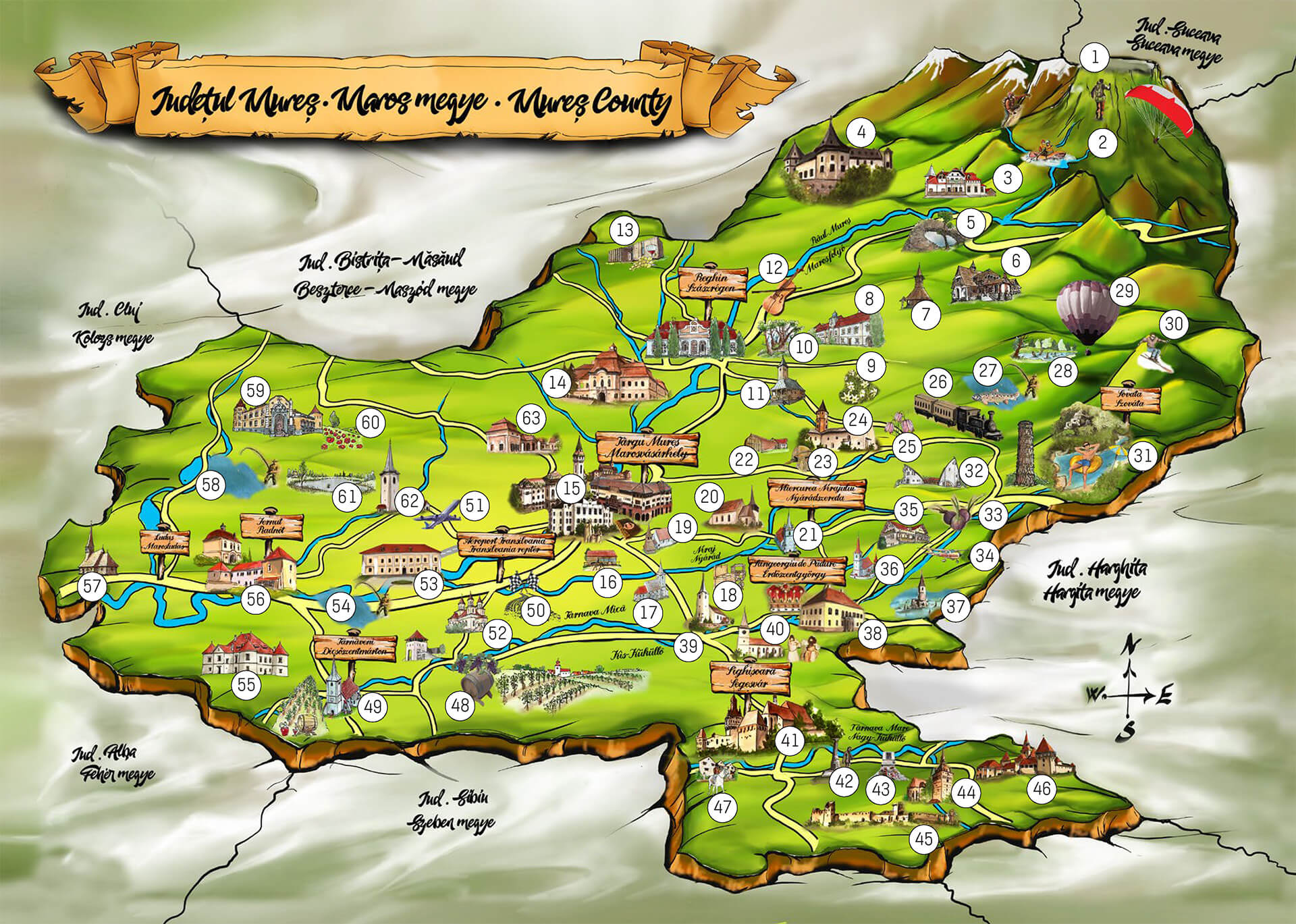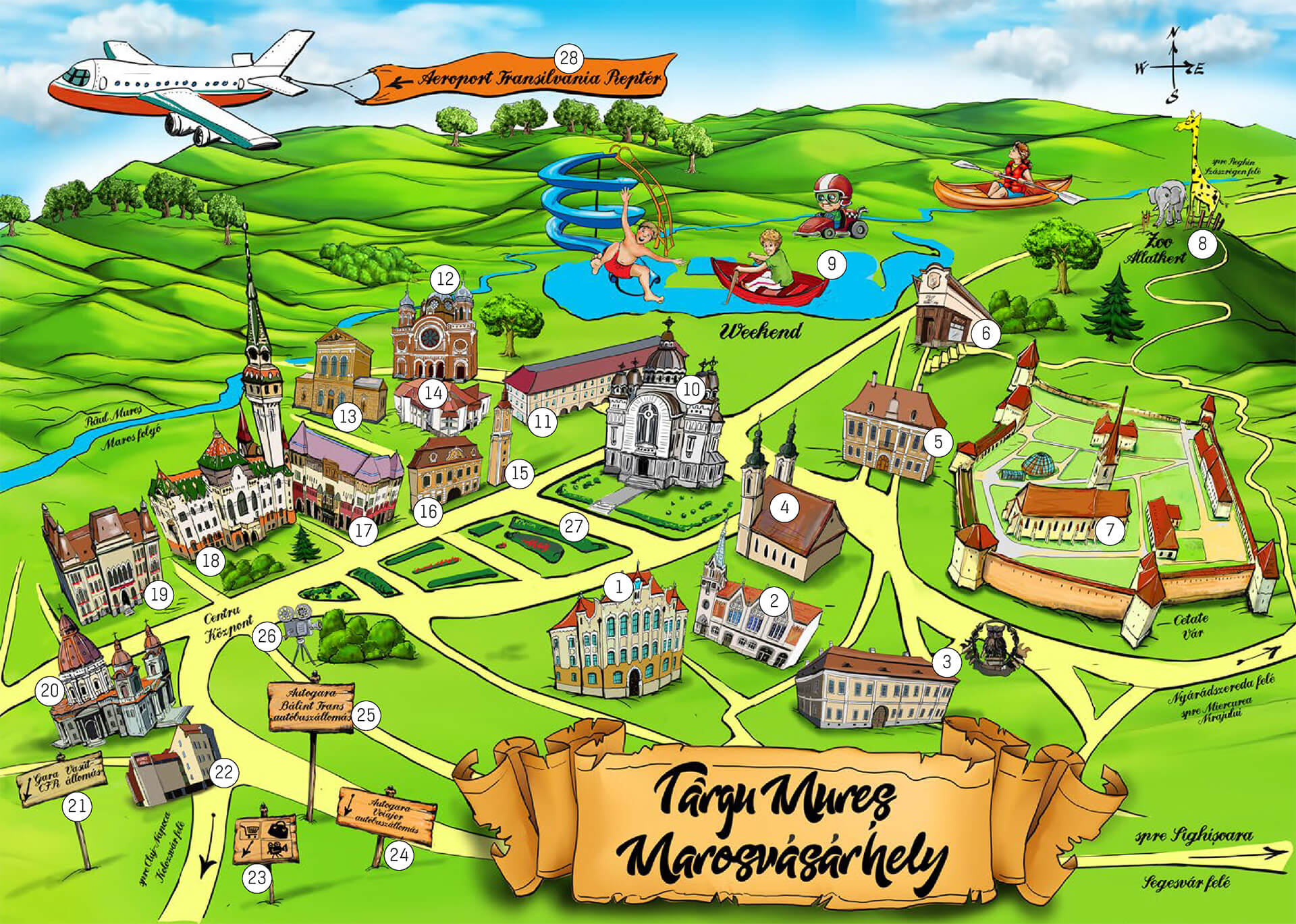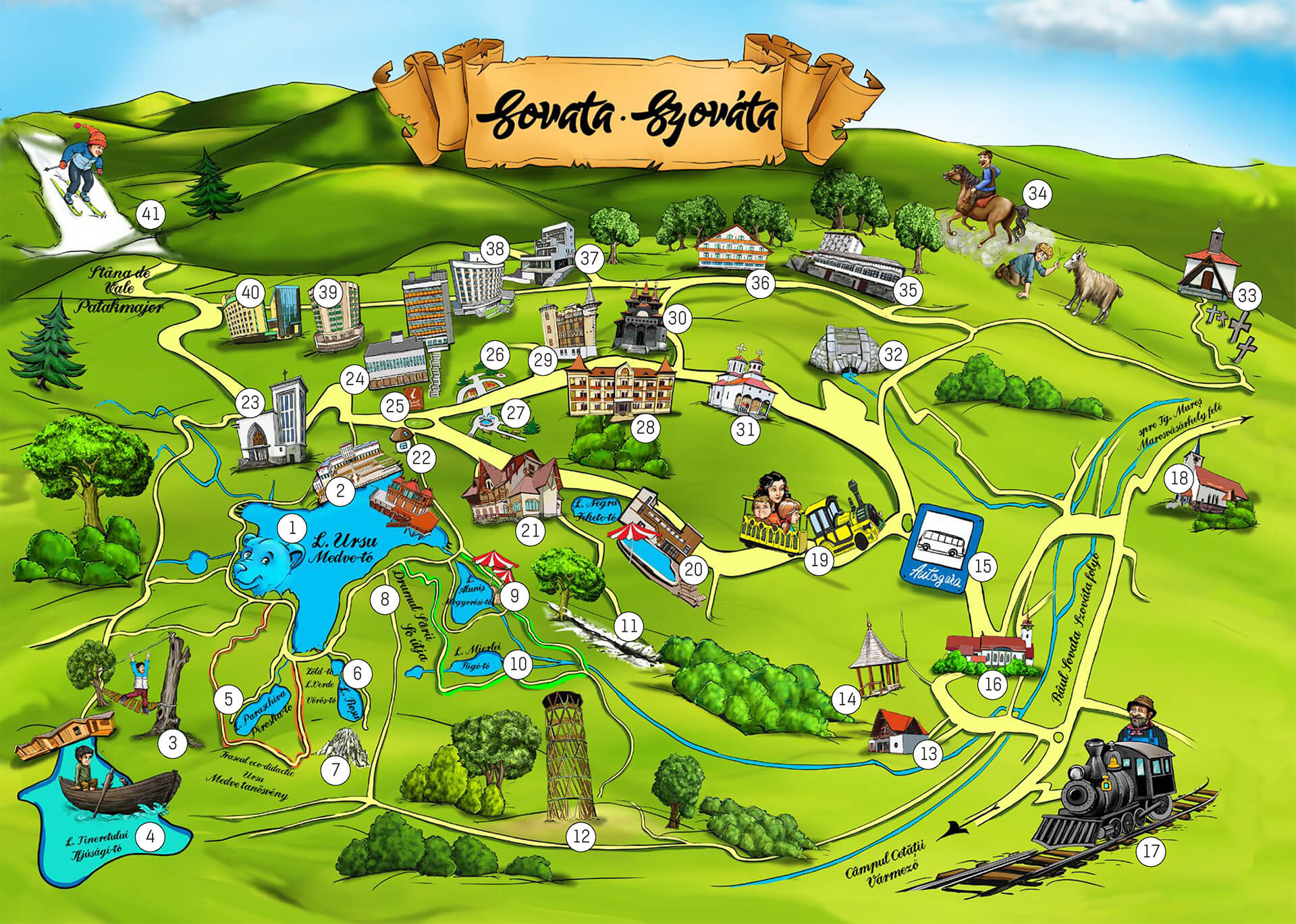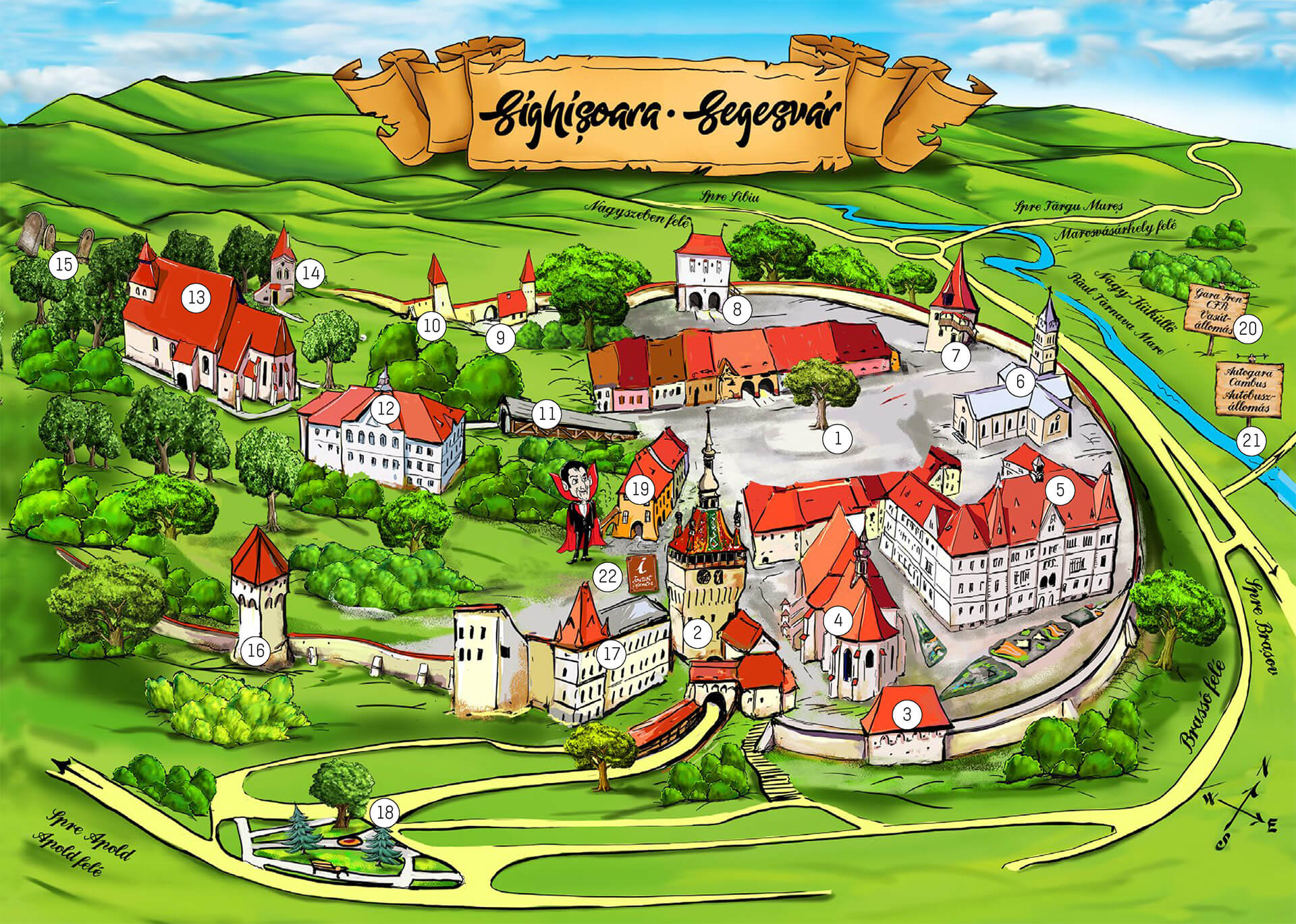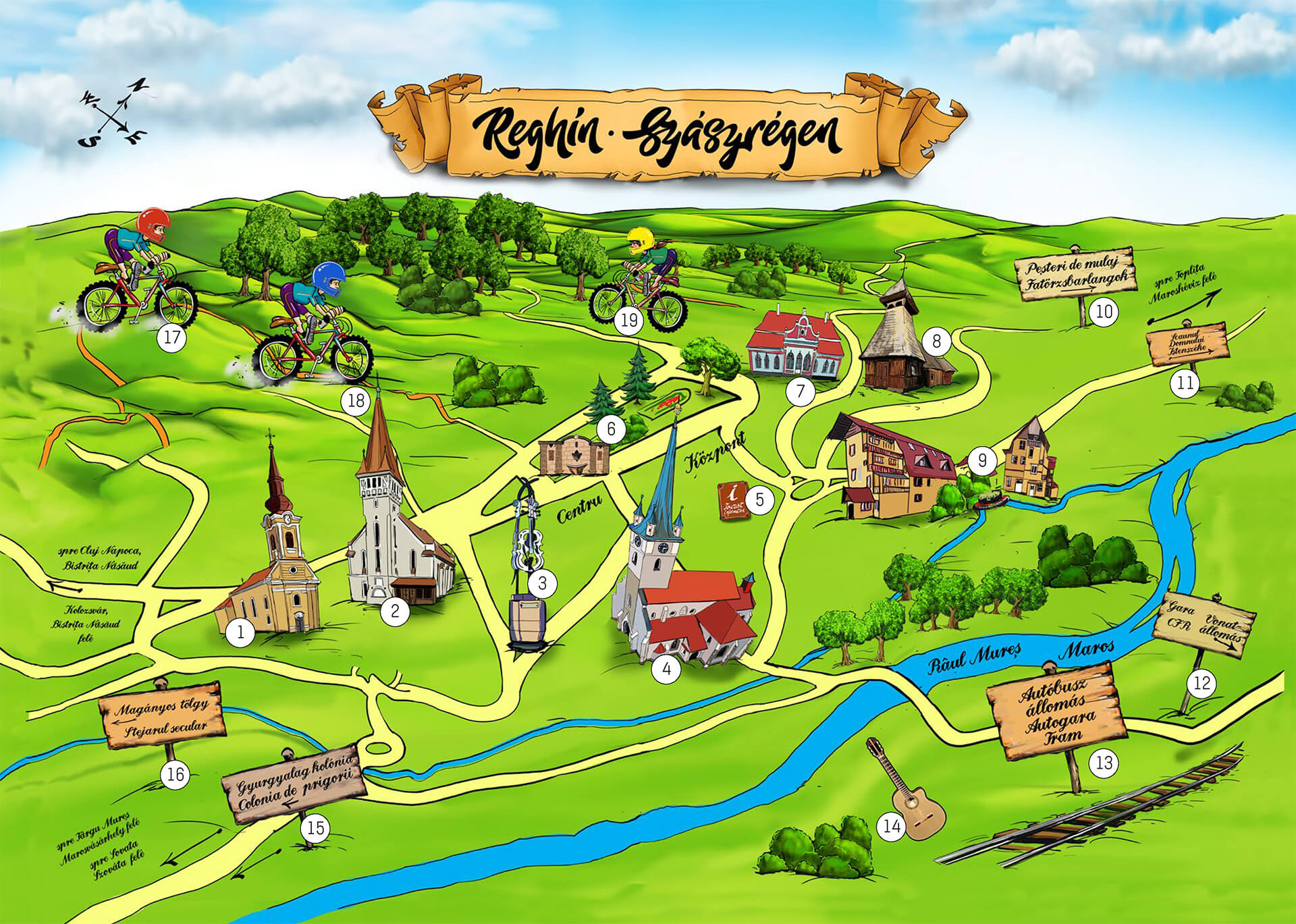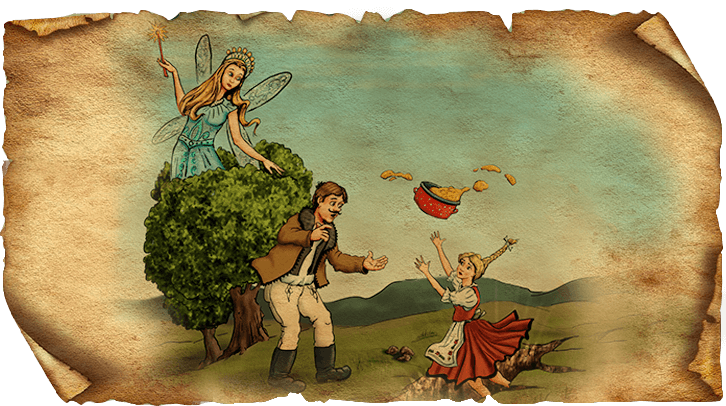
Polenta Hill - Sângeorgiu de Pădure
Fairies and giants once inhabited Sângeorgiu de Pădure, a hill next to the village, which according to folk tradition, was named after a fairy’s act. The Polenta Hill emerges in the southeastern part of the small town. According to the story, a handsome young shepherd was grazing his sheep on this hill. His pregnant wife prepared his meal for him every morning, but one day the boy forgot to take the food with him. The young woman noticed that the polenta remained at home, so she got up to take the meal to her husband. But an evil fairy stepped in, took a fancy to the beautiful shepherd: she opened the earth under the woman on her way to the husband, and the wife fell into the gap. The place where the food was scattered was called the Puliszkadomb (Polenta Hill).There is another unique sight in the vicinity of Sângeorgiu de Pădure: we can also reach the famous lake of Bözödújfalu on foot / Bezidu Nou, and beneath there is a small settlement. Not only the Polenta Hill, but also this lake keeps the memory of evil spells from the eighties of the last century: the system at that time forced hundreds of families to leave the village and flooded the town with water, washed away its past and its souvenirs. The lake visitors can see the remains of buildings here and there, while the flooded village has a lively fishing experience today.The largest tourist attraction in Sângeorgiu de Pădure is undoubtedly the Rhédey Castle, which adorns the center of the settlement. In this building was raised in the early 19th century Rhédey Klaudia of noble origin, the great-great grandmother of Elizabeth II Queen of England. According to Balázs Orbán, the old castle was originally an abbey.Another significant attraction of the settlement is the Calvinist Church built at the turn of the 13-14th centuries, giving place to the Unitarian synod in 1618. On the exterior wall was found a Szekler runic script.There are plenty of hiking opportunities around Sângeorgiu de Pădure: we can roam not only the countryside in Bezidu Nou, but we can still meet friendly shepherd children grazing their sheep on Polenta Hill and its surroundings.
Learn more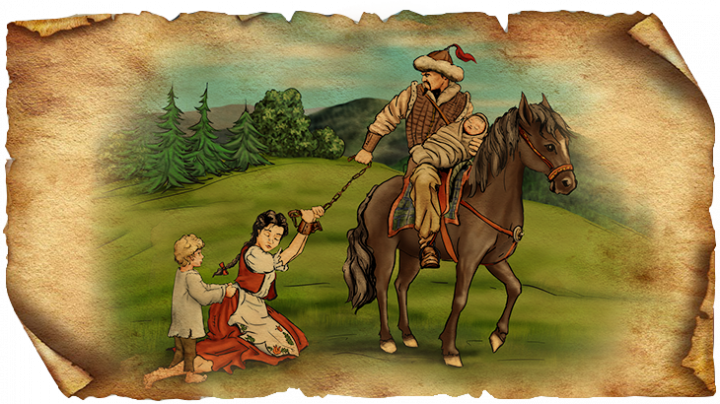
Danger Hill - Bekecs Peak
The inhabitants of Șilea Nirajului suffered very much due to the Tartars’ destruction on the Danger Field, under the Bekecs peak, but they received as much as they gave to the dog-heads at the Tartar Pass – so do people say, and a part of the place names preserve its memory today. The local people were hiding from the Tartar invasion in the glades at the bottom of Bekecs Hill. But once, a traitor led the enemy to the hiding people, and, while most of the men went out for food and firewood, they attacked the defenseless women and children. Those who were not abducted were cruelly slaughtered in the forest – hence the place was named the Field of Danger or Danger Field. On hearing the news, the monks living in the monastery of the Palace hill near Bekecs were also fleeing. Like the valiant soldier Csombod of Sóvárad, they hid their treasures in the bell, so that the Tartars could not find it. Although the treasure was not found, the monastery was destroyed. However, the Szeklers from Niraj, heated by vengeance, kept their end up and went after the departing Tartars. Only few people of the hostile troops were able to flee, leaving behind the stolen treasures, the captive children and women, who finally escaped.The legend of several centuries came alive again at the beginning of the twentieth century, during the First World War: in 1916 bloody battles took place on the Bekecs Hill and its surroundings. By getting to the peak, hikers can see today several world war memorials. After we pay tribute to the memory of warriors of the past, we should spend a few minutes to admire the unparalleled sight in front of our eyes: the hill is bordered from the northwest by the valley of the Niraj, from the southeast by the valley of the Little Târnava, and in good weather you can see even to the Făgăraș and Harghita Mountains. To the east, we can see the peak of Siklódkő and Firtos Mountain. Șilea Nirajului is the highest settlement in the region of Nirajul Mic. In 1719 some of the population was destroyed by a plague epidemic. The region of the small village in its picturesque environment is not suitable for grain cultivation, its inhabitants mainly live from growing animals and fruit.If we climb up the Bekecs through the Danger Field, we can expect our paths to be flanked by a lot of flowers: spring saffron, dog’s-tooth-violet, starry flowers, but in early spring there are even snowdrops in the higher parts. It's as if they kept every year the memory of the people lost here.
Learn more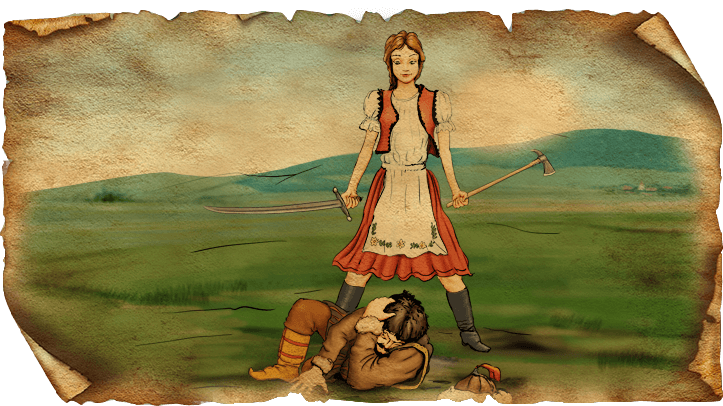
Kata's Well - Măgherani
Centuries ago there was no village of Nyárádmagyaros along the Upper-Nyárád. According to the tradition, the Szeklers built a castle on one of the hills in the surroundings, and the Várbérc (Castle Rock) place name is also used today.One of the Tartar hordes began to besiege this small, but strong fortress. Surely they would have occupied it, and the refugees would have been captured if the Szeklers had not been courageous. There was among them a robust, tall, strong lass, Kate Csergő, who with the courage of Jeanne d'Arc, incited the men for resistance and fight. She was the leader of the troop, destroying the Tartars with sword and halberd, while a handful of defenders pushed the last „dog-head” far from the valley. In memory of the exploit of Kata Csergő, one of the local sources was named the Kata’s well, from which tourists can also quench their thirst. According to Balázs Orbán, the Tatars later destroyed the castle, so the locals left their ruins and settled at a farther place. In a picturesque valley, Magyarós is not named for the heroes of the castle but for the many hazelnuts (mogyoró = hazelnut) around it.Above the village, on the other side of the hill, the Bekecs-peak is considered a sacred place, and in former times on its glade there was a chapel, and the new building on its site can be visited today. From the peak you can see almost the whole country of Nyárád, the place of the former Szekler–Tartar battles. The place is surrounded by special oak woods and wildflower meadows, relaxing the tourists – as if the weather stopped when the visitor arrives on the peak and looks into the countryside, as in good weather one can see even to Hargita Mountains.Not only the Tartar invasion, but also the First World War affected the village. The memorial erected in the memory of Szekler heroes, has been also a local point of interest for more than a hundred years. Like their heroic predecessor, Kata Csergő of the legends, they also showed the famous courage of the Szeklers.
Learn more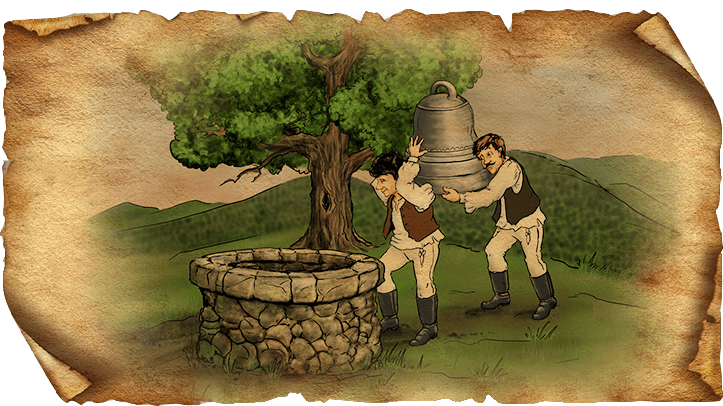
Csombod’s Castle - Sărățeni, Chibed
Between Kibéd / Chibed and Sóvárad / Sărăţeni, on a high point, there stood once the knightly castle of Csombod, in the well of which the legendary soldier had hidden a great number of treasures. The lord of the castle, Csombod had a strong, loud voice – so that when he exclaimed, "The Csombod valiant is on his way!," everyone heard it and nobody had the courage to step on the way leading out from the castle. It is believed that the valiant created a tunnel inside the hill below the castle, and he successfully defended the fortress built on the hill against the enemy for a long time. But once the Tatars arrived with the troop so large that he was forced to accept, he would not be able to fight against the numerical superiority or the starving. So he decided to leave the castle together with his soldiers, but first he hid his treasures in the stomach of the earth. They fled to the nearby Hallgató-peak where they waited quietly for the dog-heads to retreat, but the people were entrapped by the latter. The treasure is still hidden inside the hill, waiting to be found. In the vicinity of Sărățeni – as its name also suggests –were probably built castle or castles, smaller fortifications.In Maros comitatus there were several similar fortresses in the Middle Ages, and Sărățeni could have been one of the chain links of Szekler Castle system, which, according to scientific research, may have been destroyed by a Tartar invasion. If we do not even find the treasure of the Csombod valiant, it is still worth hiking in the area and imagine the events of the legendary times, to go through the evocative place names. In parallel with the supposed location of the castle of Csombod, there is another hill line running down to the riverside of Little Küküllő. The first peak is called the Joy Hill, as, according to the sayings, the leader of the troop besetting the Castle of Csombod after he had won the castle reveled there, celebrating his victory.Surrounded by forests and meadows, Sóvárad is famous for its Szekler gates and traditional peasant houses, its Reformed church. There is also a village museum. Near the settlement, there are several salt-water, medicinal springs. One of the springs rises from the Castle of Csombod – it is said that its water is painted red by the castellan’s treasure.
Learn more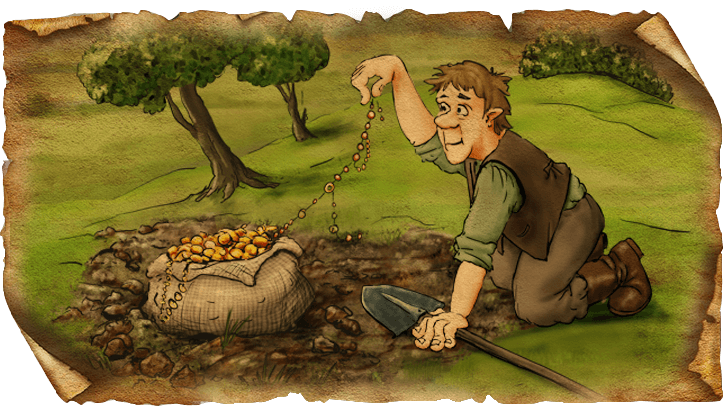
Treasure Hills - Livezeni
Centuries ago, the village of Livezeni, near Marosvásárhely / Târgu Mureş was regularly robbed by both the Turks and the Tartars. However, according to a legend, the treasures of the Turks are still buried under the hills nearby. Legend says that the Turkish soldiers who devastated the village were sharing the robbed treasures, when the locals hiding in the forests saw that the Turks were preparing to flee. It was because of the Tartars, who arrived, and the Turkish soldiers sought to hastily hide the treasures from them. They dug several pits in the hills near the village, hid the stolen treasures in the ground and then ran away. The Tatars who arrived in the village and its surroundings did not find anything to rob, and as a revenge, they burned down the homes in the village. After the Tartars left the village, the locals could finally come out. They returned to the village and rebuilt it, but all the treasures hidden beneath the hills near the woods were forgotten by all. However, a legend says that one day, one of the local farmers received a letter from an unknown expeditor – in which it was described with precision where the Turkish Treasures had been buried. Supposedly the farmer found the stolen treasures and disappeared with them, but another narrative says just the opposite: a lot of gold, silver and diamonds are still buried under the ground ever since.According to science, the interesting hills southwest of Livezeni were created due to a landslide. Between these hills the Turkish troops could have indeed camped in 1662, under the leadership of Ali Pasha. The hills hiding the treasures are worth visiting not only as fortune-hunters, but also as hikers, and also exploring the forests which protected the locals during the sieges.Another attraction in the village of Livezeni is the Calvinist Church, built in 1816, using the building material of the old Gothic-style church. In the small settlement there are several guesthouses and boarding houses. Livezeni is developing more and more, however, due to the proximity of Marosvásárhely / Târgu Mures, rather than the treasures under the land hills.
Learn more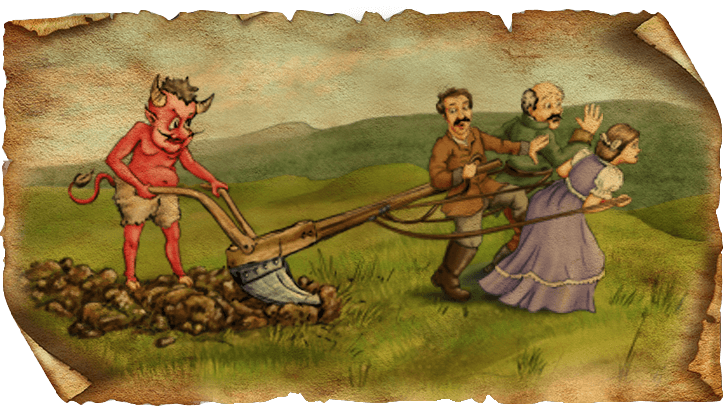
Devil’s Ditch - Dumitreni
On the left side of Kis-Küküllő, near Balavásár, in a picturesque, narrow valley lies Szentdemeter, where there was once a castle that was similar in the reatness and beauty to the castle of Lázár in Gyergyószárhegy. Unfortunately, over the centuries the castle has been destroyed, but there are still many interesting sights and stories in the small town and its surroundings, which captivate visitors here.One of the best-known attractions is the nearby Devil's Ditch, a mysterious and old mound line that is related to the history of the Castle from Szentdemeter. From the Elek Benedek's tale, we know that three great gentlemen, Balázsi, Nyujtódi and Csáki (these names are true, some of the noble families living in the neighborhood) have built the castle for several years, while working the locals abominably and plundering those who went there. They even became friends with the devil so that they could continue to dominate the inhabitants. The devil has heard the wishes and the curses of the simple people, and he made the truth: the nobles were tied to an enormous ploughshare, forcing them to dig a long ditch near Szentdemeter, let them know what the torment is. The villagers might even hear the shout of the devil and the screams of his whip – the ditch dug by the nobles has been called the Devil's Ditch ever since.The valley of Demeter, which is a popular tourist attraction, was destroyed also by natural disasters – in August 1940, huge floods damaged the houses in the village. Then a young man from Hungary taught the villagers a new craft to offer them livelihood: the tradition of cornhusks-braiding was transferred from father to son, and there are still old people who know this craft. Spun cornhusks are used not only for the manufacturing of consumer goods, baskets, but also for souvenirs and decorative objects for visitors.Nowadays, the church of Szentdemeter, rebuilt several times, but still maintaining its medieval character, is the most visited place in the settlement, and the valley itself, in which once the legendary lords had so much to suffer from fraternizing with the devil.
Learn more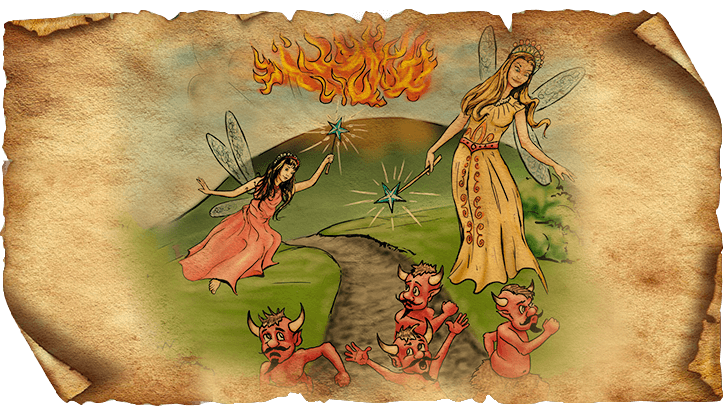
Paladomb's Fairies - Eremieni
One of the places for the rare battles between the fairy-tale fairies and devils was Paladomb (Slate Hill) near Nyárádszentimre. The village and its surroundings in the little valley were donated by King Saint László to his three loyal noble men, who founded the settlement. According to the folkways, fairies lived near Paladomb, and they made sure that the lands were always generous. However, once a year devils also appeared in this area trying to chase out the fairies out of their living place.The people of the village called these evil creatures nightmares, and they felt obliged to defend the kind-hearted fairies from them. When the devils attacked them, the villagers outsmarted these unearthly evil-spirits, throwing burning tree branches into the air, and the devils believed that God helped the fairies. So they quickly disappeared from the Paladomb neighborhood and never returned. Being grateful, the fairies made the lands more fertile in Nyárádszentmihály and its surroundings.In the small village, on another hill there is a very old monument church in Gothic style. Balázs Orbán wrote about it, "... here, however, we are fortunate to find a very nice and well-preserved Gothic monument that worthily arouses the archeologist's attention."An interesting addition to visitors is the fact that there is a funeral shaft under the church, which is supposed to serve as a grave for monks. On the inner wall there are mural fragments, one of which representing the crucifixion of Jesus. The gallery and the floor are of a distinctly blue color, the parapets are decorated with white embroideries.Tourists can see embroideries not only in the church, but also in the village museum – in the small museum called by locals as "red-white-green house" you can see old crafts, workshops and tools, some of which can be tried. There are great hiking opportunities in the area. Although the people living on Paladomb no longer encounter fairies and demons, their inheritance lives in the memory of the village.
Learn more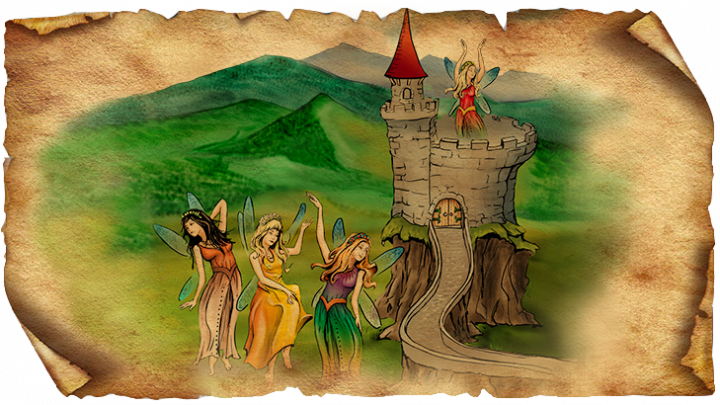
The Fairie’s Gathering Place - Ghindari
Near Makfalva, on the left bank of Kis-Küküllő, between the two small brooks, according to the folk tradition, once there was the castle of a Szekler Rabonban (voievod) called Maka. During the Tartar invasion and after that, the defenders gradually settled in the hilly area near the fortress, Várután, and later founded the Makfalva named after the castle.After a while, the Szeklers left the castle, but it did not last long. According to a local legend, cheerful fairies took possession of them who played music every night, sang and danced among the old walls. The inhabitants were very fond of them, dreaming of their music and singing more beautifully than ever. However, not long afterwards cloudy times came, and the peaceful beings were forced to flee to more protected, forested areas.The castle that remained without a resident then began to be destroyed, its stones were slowly carried away by the inhabitants of Makfalva, and now the exact location of the former fortification cannot be found. On the other hand, the high place where the castle once stood can still be visited – local people called it the Fairies' gathering place, thus keeping the memory of the cheerful creatures. Makfalva suffered several natural disasters in the last century: a landslide and an earthquake destroyed its Calvinist church, which was rebuilt – one of the sights of Makfalva today.The locals consider that the famous peasant leader GyörgyDózsa is also the native of the settlement: if you go, visit the Dósa manor house, built in 1813, where an ethnographic museum was established.Earlier, the inhabitants of the settlement used to live mainly from handicrafts and flax processing. Their descendants still believe that Fairies return to the ruined fortress once a year, at the beginning of November, they revel until dawn, and then disappear from the countryside. They cast a spell to their gathering place, this is why the November sky is gray, then the rainy weather comes. But during clear and quiet nights they sometimes hear the soul-stirring music of these fabulous creatures.
Learn more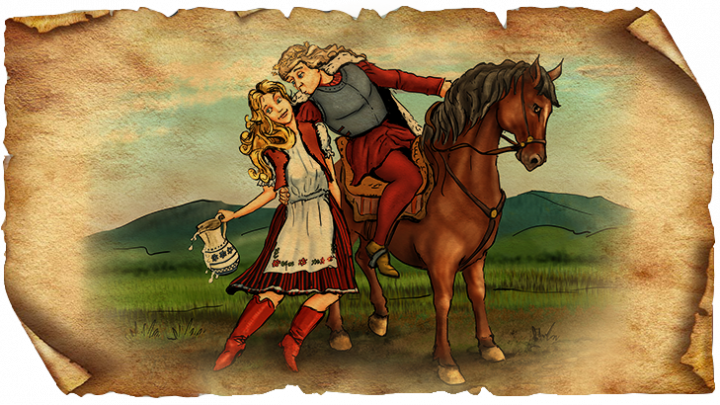
Tales from Trei Sate / Hármasfalu
On the right bank of the river Kis-Küküllő / Small Tarnava, Hármasfalu / Trei Sate, situated in the vicinity of Erdőszentgyörgy / Sângeorgiu de Pădure and Makfalva / Ghindari, was established in 1950 by merging three villages – Csókfalva / Cioc, Atosfalva / Hotești and Székelyszentistván / Ștefănești. The mother village was Székelyszentistván. Here is situated the Reformed church built in 1880, but according to tradition, there was an ancient church here in the time of King St. Stephen. For example, there are many beliefs about the places at the boundaries of the settlement, for example, it is said about the caverns of the site called Virgó that gold is veritably produced there that is regularly harvested and taken away by mysterious aliens. The boundary part called Keme Bükke got its name from a Hungarian leader, and according to folk tradition, there was a fortress on the Kozmáné Hill. On the pole of the castle a white flag was fluttering in peacetime, but if it was a red flag on the fortress, it was considered as a danger signal - the men ran with their weapons to defend the castle and the village. The people of the village Szentistván consider that II. Ferenc Rákóczi also often hunted in this region. He set up a camp several times on the top of the border, this is why it is still called the Prince's Meadow. The origin of the other village, Csókfalva, is related to King Matthias. The King once passed through the village accompanied by a cortege, and before he could drink, his populous escort, his soldiers all agitated the good-quality water of the village wells. The king remained almost thirsty, but a beautiful peasant girl, whose house was avoided by the soldiers, came to help him. She brought clean water from there in an ornate jug for King Matthias, who, thanks to her, kissed both of her cheeks - the girl became Matthias's maid of honour, and the village was named Csókfalva. The same story appears in Szentistván, but according to legend, King St. Stephen himself kissed a girl, this is how the village got its name. According to another story, the founders of Csókfalva could not decide whether to establish a village or city. As the majority said "it should be only a village", the settlement was founded as a village. In the third village, Atosfalva, we find a belief related to the Prince of Rákóczi: during a campaign, the prince planted a lime tree (as the people call it: zádokfa) in the village, which is said to be still there today. According to Balázs Orbán, the modern Atosfalva was formed by the fact that six families fled from the plague epidemic to Szentistván - so it was first called Hatosfalva, and later its name was formed by omitting its initial letter. The Unitarian Church built in 1798 in Csókfalva is one of the most beautiful sights, and in Székelyszentistván, it is worth visiting the Barátosi Mansion House. Walking around the beautiful mansion houses, through the lively little streets, they can remind us of the kissing stories associated with the settlement. If we get tired, we can relax in the shade of beautiful lime trees in a princely way.
Learn more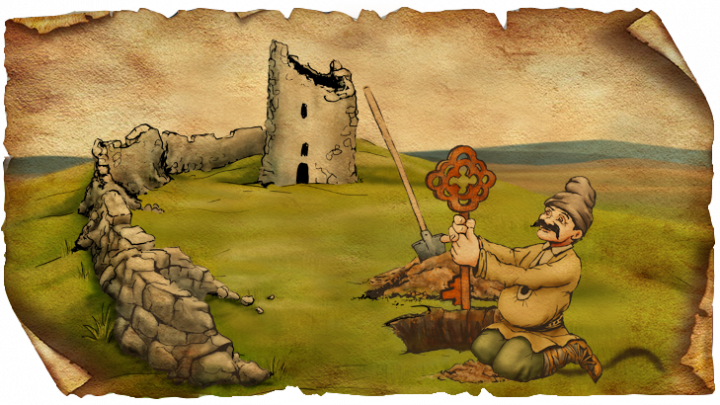
Vityál castle - Eremitu
The history of the largest settlement in the Upper Nyárád region is exciting not only due to the battles of the First World War on the Bekecs Hill, but also due to the Vityál castle and the related legends. There are several small villages belonging to Nyárádremete parish, and the inhabitants of the settlement earned their livelihood for centuries in the field of forest and stone exploitation, farming and animal husbandry. Walking through the forests in the area, one can still discover the remains of the castle, which probably survived the age of the migrations. Their existence proves that the settlement has a remarkable history. Vityal castle may have been one of these fortresses. Its traces and remains can be still found today. Balázs Orbán wrote, “The shape of this castle was not defined by accepted artwork but the shape of the hilltop, as the castle was rectangular with rounded corners, similarly to the hilltop; the walls of the castle has a circumference of 246 steps. These walls are four feet wide, built firmly from selected trachyte pieces with hot lime, so that they still defy in their massivity the ruinous power of time even now...” According to the archaeologists, the fortress was built on the foundations of a Bronze Age castle in the Middle Ages, and they were used probably as a fortress during the invasions of the Tatars. According to folk tradition, the castle was not built by the villagers, but the fairies, who celebrated the good work during three days and three nights. But on the third night there was a storm, a lightning struck into the building, and the fairy castle burnt down. In their sorrow, the wonderful creatures left their ruins, but the people created a great number of myths about the event. Many believed that treasures were hiding under the castle, but according to the elderly, a lucky treasure hunter, nuncle Pop Petru found only a huge key from which he made a horseshoe for his horse. One of the most interesting sights of Nyárádremete is the crucifix of the Roman Catholic church built between 1808 and 1812. The crucifix was probably made in the 14th century and is one of the most famous monuments in Transylvania. If we visit this place, it is worth to climb up to the Bekecs Hill, which offers scenic views of the Southern Carpathians and the Görgényi / Gurghiu Mountains. The nearby Vármező fish ponds and its hot air balloon festival attract visitors. For those interested in the built heritage and the religion, the nearby church and monastery in Mikház / Călugăreni offers a spiritual refreshment: this is the second best-known building of the Franciscans in Transylvania after the church in Csíksomlyó / Șumuleu de Ciuc, the church was built in the late Renaissance of the 17th century. Tourists can also visit the worthily famous Csűrszínház, which regularly hosts various musical and dance performances. If we can no longer revel with the fairies that abandoned the Vityál castle, there will probably still be young people in the village who are fairly beautiful and just as cheerful.
Learn more